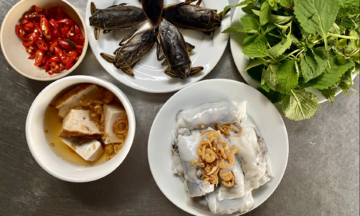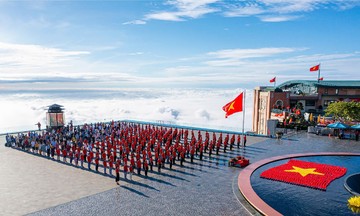Nestled among the rolling hills of northeastern Italy, just a few kilometers from the Adriatic Sea, lies San Marino, one of the world's smallest and oldest countries, spanning just over 60 sq km.
There are no border crossings or checkpoints upon entering San Marino. The only indication that visitors are leaving Italy and entering another territory is a roadside sign reading "Ancient Land of Liberty". Many visitors may inadvertently step across the border without realizing they've left Italy and entered a different country.
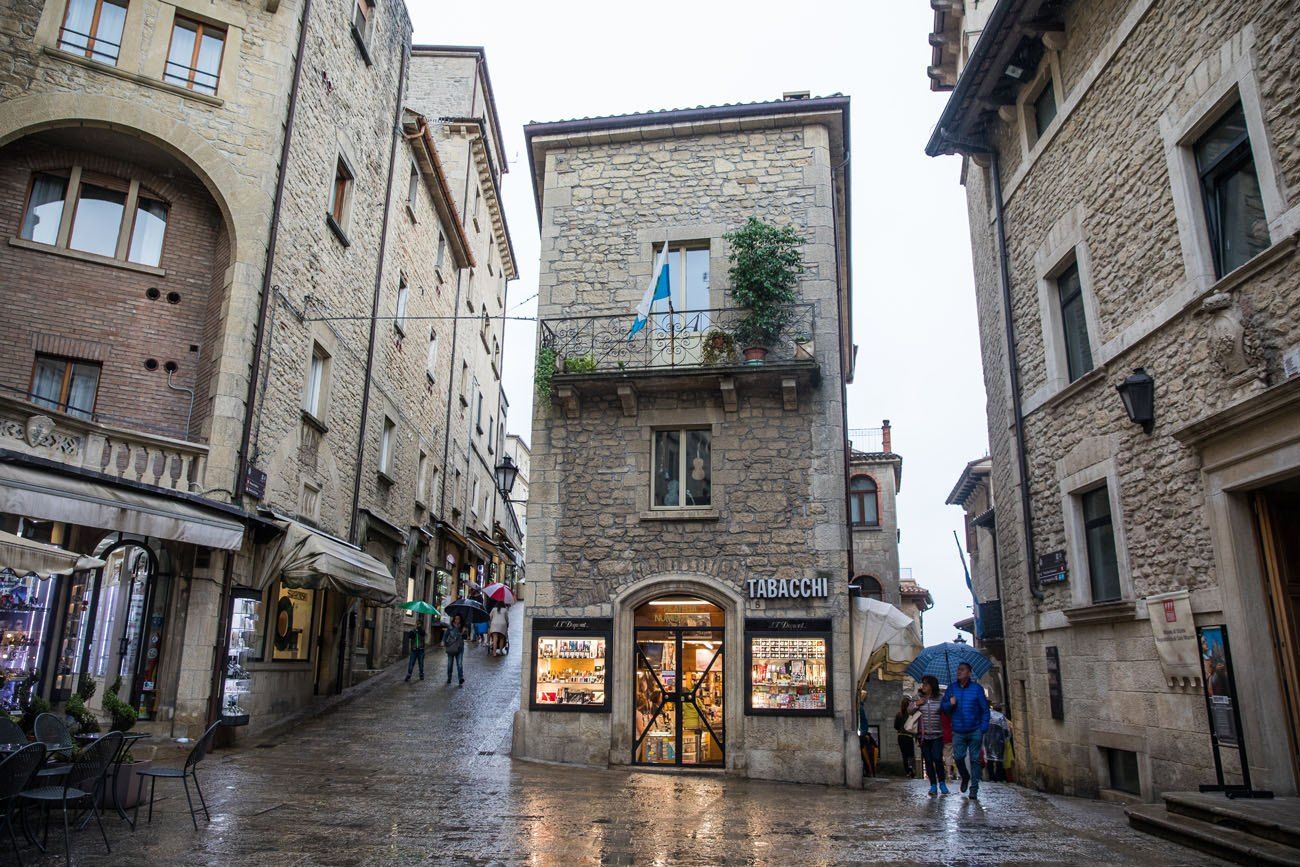 |
The capital, San Marino City (pictured), sits atop Mount Titano. Photo: Earth Trerkers |
The capital, San Marino City (pictured), sits atop Mount Titano. Photo: Earth Trerkers
San Marino was founded in 301 by a stonemason named Marinus, fleeing religious persecution in the Roman Empire. Legend has it that he sought refuge on Mount Titano, establishing a small community that would become the Republic of San Marino. In the basilica atop the mountain, visitors can see relics related to Saint Marinus, including the stone where he supposedly slept, believed to have healing powers.
Despite being entirely enveloped by Italy, San Marino is an independent nation with its own flag, coat of arms, passports, a national soccer team, and nearly 34,000 citizens.
Antonia Ponti, a San Marino tour guide, explains that while the language and cuisine are nearly identical to Italy's Romagna region, residents never identify as Italian. "They are proud to be Sanmarinese – free people," Ponti says.
San Marino's historic center, a UNESCO World Heritage site, sits atop Mount Titano, boasting winding cobblestone streets, three connected defense towers, and views stretching to the Adriatic coast. The absence of cars creates a sense of stepping back in time.
According to Ponti, the oldest traditional craft here is quarrying stone from Mount Titano's slopes. After World War II, crafts such as ceramics, papermaking, and furniture production flourished, creating a prosperous and close-knit community.
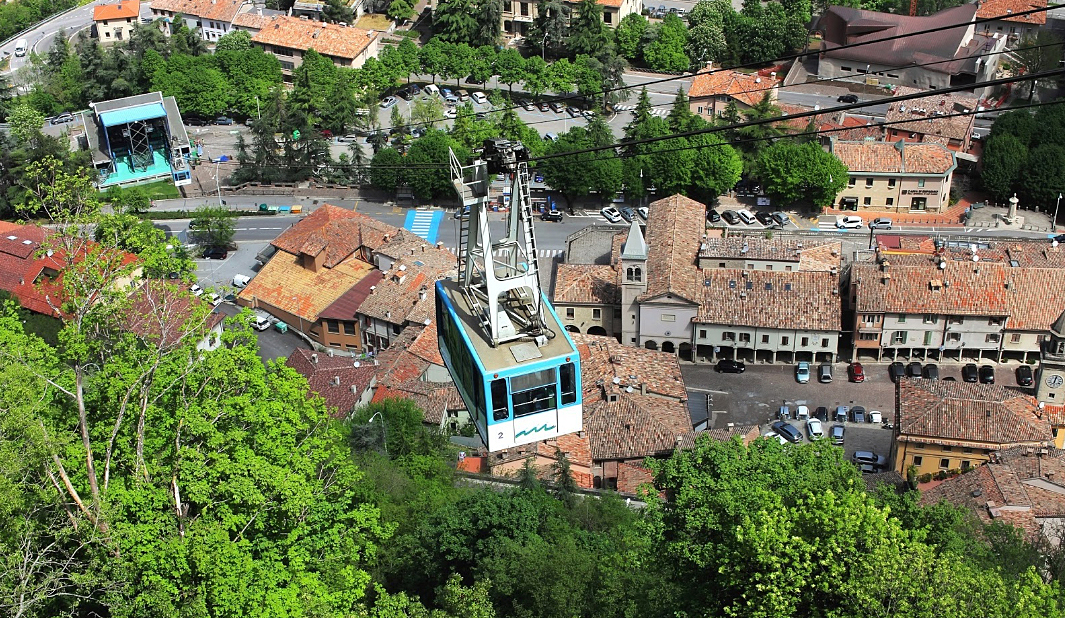 |
Enjoy views of San Marino from a cable car. Photo: Travel Adventure everywhere |
Enjoy views of San Marino from a cable car. Photo: Travel Adventure everywhere
"We live on a small piece of land, but we have our own identity and maintain the spirit of freedom that has existed for centuries," Ponti says.
While not renowned for striking beauty, San Marino attracts visitors with its historical charm, medieval architecture, and the feeling of discovering a forgotten corner of Europe. Many come to the Emilia-Romagna region for Italian cuisine but are surprised by San Marino's quaint charm.
One of San Marino's main attractions is the parliament building in the heart of the old town. During summer, the hourly changing of the guard ceremony draws crowds with its pageantry and vibrant colors. The guards, dressed in medieval uniforms with bright red trousers and tasselled hats, create a fairytale-like scene.
Beyond its parliament, San Marino preserves many ancient institutions rarely seen in modern Europe. Notably, it has two heads of state (co-regents), known as Captains Regent, elected every 6 months since 1243. The two inauguration ceremonies on 1/4 and 1/10 are conducted with strict traditional rituals, largely unchanged for centuries. San Marino is divided into 9 administrative districts, called castelli.
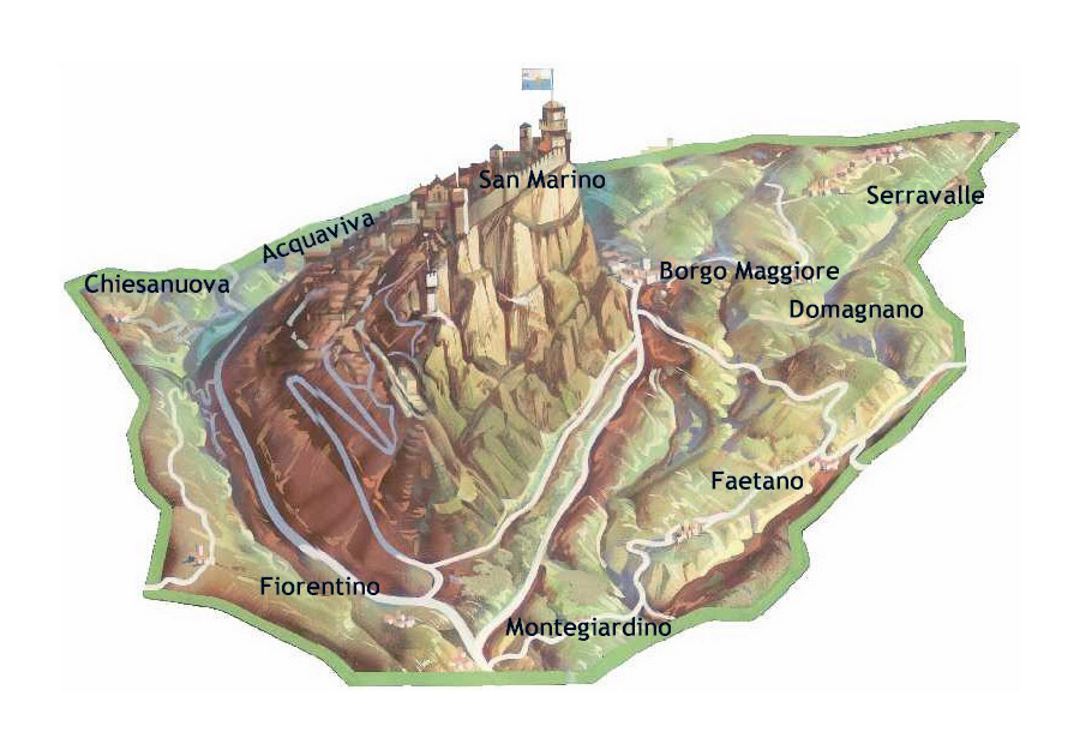 |
A 3D model of San Marino with its 9 administrative districts, with the capital city perched atop a mountain. Photo: Mapsland |
A 3D model of San Marino with its 9 administrative districts, with the capital city perched atop a mountain. Photo: Mapsland
Visitors can experience this division by taking the cable car from the old town down to Borgo Maggiore at the foot of Mount Titano. This scenic ride offers panoramic views of San Marino.
The old town also houses the Museum of Stamps and Coins, displaying commemorative medals, old stamps, and the nation's first coins from the 19th and 20th centuries. Beyond medieval architecture, San Marino offers a network of trails and verdant hills ideal for hiking, cycling, climbing, and archery.
The local cuisine blends the flavors of Italy's Romagna and Marche regions, featuring handmade pasta and piadina, a flatbread with various fillings. San Marino is also known for liqueurs made from almonds and hazelnuts.
A must-try dessert is torta tre monti, or "Cake of the Three Mountains," considered the national dish. It consists of layers of thin wafers filled with chocolate cream and hazelnuts, representing the three towers on Mount Titano.
For day-trippers, after indulging in local delicacies, returning to Italy is as simple as a downhill stroll.
Anh Minh (CNN)











